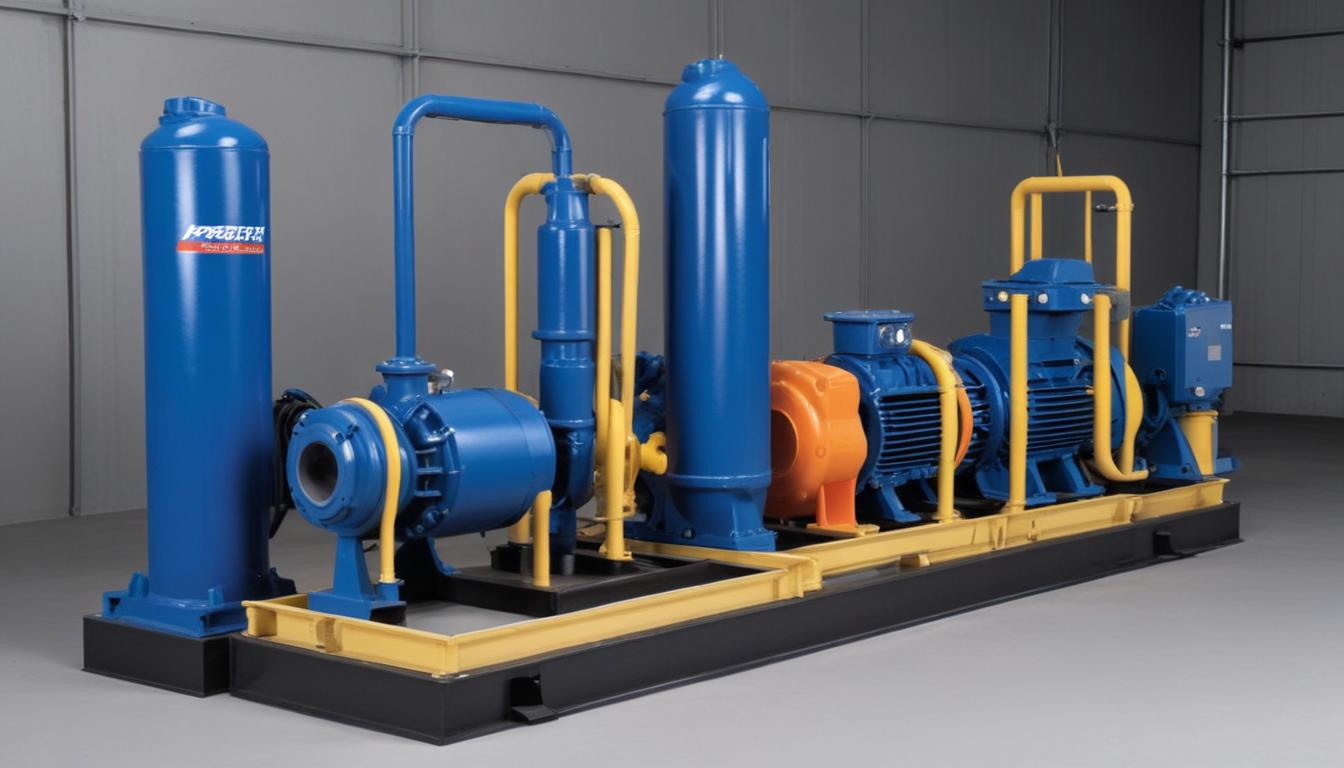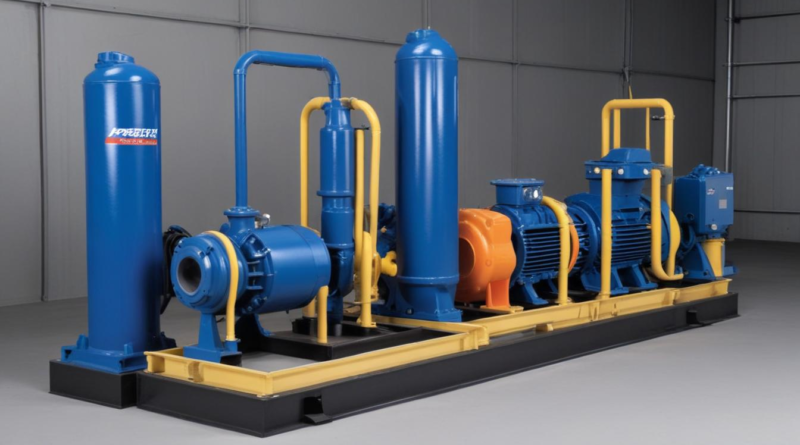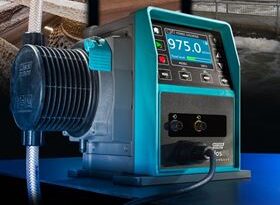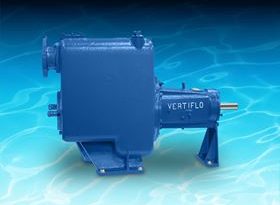how to choose a pump based on installation ease
When embarking on pump selection, understanding the specific installation requirements is paramount to ensure installation ease. The following criteria should be meticulously evaluated to facilitate a smooth installation process:
- Location and Space Availability: Assess the physical space where the pump will be installed. Measure dimensions to ensure the chosen pump fits comfortably without obstructing nearby equipment or pathways.
- Environmental Conditions: Consider factors such as temperature, humidity, and potential exposure to corrosive substances. Select a pump with appropriate ratings to withstand the operating environment.
- Load Capacity: Determine the flow rate and pressure requirements needed for your application. Ensure the pump can handle the desired capacity without overexertion.
- Installation Site Accessibility: Evaluate how easily the installation area can be accessed for setup. Limited access may necessitate pumps that are lighter or have modular components for easier handling.
- Regulatory Compliance: Verify that the pump meets all local and industry-specific regulations and standards. This ensures legal compliance and promotes safety during and after installation.
A structured approach to assessing these requirements can be illustrated in the following table:
| Assessment Criteria | Description | Considerations |
|---|---|---|
| Space Availability | Physical dimensions and layout | Measure installation area, ensure clearance for maintenance |
| Environmental Conditions | Temperature, humidity, exposure to elements | Choose corrosion-resistant materials, suitable for climate |
| Load Capacity | Flow rate and pressure requirements | Match pump specifications to application needs |
| Accessibility | Ease of access for installation and maintenance | Select pump design that supports easy installation |
| Regulatory Compliance | Adherence to standards and regulations | Ensure certifications and compliance documents are available |
By systematically evaluating these installation requirements, you can streamline the pump selection process, ensuring that the chosen pump not only meets operational demands but also aligns with the practical aspects of installation and future maintenance.
evaluate pump accessibility
Ensuring that the pump is easily accessible is a critical aspect of the overall installation process. Accessible pump placement not only facilitates a smoother installation but also simplifies routine maintenance and potential future repairs, contributing significantly to installation ease.
- Physical Reachability: Verify that the installation site allows for easy access using the necessary tools and equipment. Limited reachability can complicate the installation process and hinder effective maintenance.
- Clearance Space: Allocate adequate space around the pump to accommodate installation activities and future maintenance tasks. Sufficient clearance ensures that technicians can work without obstructions, reducing the risk of damage during handling.
- Proximity to Utilities: Position the pump near essential utilities such as power sources and plumbing connections. Proximity minimizes the complexity and length of connections, streamlining both installation and operational setup.
- Pathways and Obstacles: Assess the installation area for any potential barriers or tight spaces that may impede access. Clear pathways are essential for transporting the pump and associated components to the site without difficulty.
- Safety Considerations: Ensure that the pump’s location complies with safety regulations, providing safe and unobstructed access for workers. Proper placement reduces the risk of accidents during installation and regular maintenance.
The following table outlines key accessibility factors to consider during pump selection:
| Accessibility Factor | Description | Considerations |
|---|---|---|
| Physical Reachability | Ease of accessing the pump location | Ensure paths are clear and accessible for installation equipment |
| Clearance Space | Area surrounding the pump for installation and maintenance | Provide sufficient room to maneuver and perform tasks without obstruction |
| Proximity to Utilities | Distance to necessary power and plumbing connections | Minimize the length and complexity of utility connections |
| Pathways and Obstacles | Presence of barriers or tight spaces near the installation site | Plan installation routes to avoid obstructions and facilitate easy access |
| Safety Considerations | Compliance with safety standards and regulations | Ensure safe access for workers and minimize hazards during installation and operation |
By meticulously evaluating these accessibility factors, you enhance the overall pump selection process, ensuring that the chosen pump not only meets operational requirements but also aligns with practical aspects of installation and maintenance. This comprehensive approach minimizes potential challenges, promoting efficient setup and sustained functionality over the pump’s lifecycle.
consider plumbing compatibility
Ensuring that the pump is compatible with existing plumbing systems is crucial for achieving installation ease. Compatibility issues can lead to leaks, inefficiencies, and increased installation time. To facilitate a seamless integration, consider the following criteria:
- Pipe Sizes and Connections: Verify that the pump’s inlet and outlet sizes match the existing piping. Mismatched sizes may require additional fittings or adapters, which can complicate the installation process.
- Connection Types: Identify the types of connections used in your plumbing system, such as threaded, flanged, or socket weld. Selecting a pump with compatible connection types eliminates the need for extensive modifications.
- Material Compatibility: Ensure that the pump’s materials are compatible with the fluids being pumped and the existing plumbing materials. This prevents corrosion and extends the lifespan of both the pump and the plumbing infrastructure.
- Flow Rate and Pressure: Align the pump’s flow rate and pressure specifications with the requirements of your plumbing system. Inadequate or excessive flow rates can lead to inefficient operation and potential damage to the system.
- Installation Orientation: Determine the optimal orientation for the pump within the plumbing layout. Proper orientation ensures efficient operation and reduces the risk of installation errors.
- Regulatory Standards: Verify that the pump and its connections comply with local plumbing codes and industry standards. Compliance ensures safety and legal adherence during installation and operation.
A clear understanding of plumbing compatibility can be organized as follows:
| Compatibility Factor | Description | Considerations |
|---|---|---|
| Pipe Sizes and Connections | Match inlet and outlet dimensions with existing pipes | Avoid the need for additional fittings or adapters |
| Connection Types | Ensure compatibility with threaded, flanged, or socket weld connections | Select a pump that matches the existing connection types |
| Material Compatibility | Compatibility between pump materials and plumbing system fluids | Prevent corrosion and extend system lifespan |
| Flow Rate and Pressure | Align pump specifications with plumbing system requirements | Ensure efficient and safe system operation |
| Installation Orientation | Determine the optimal pump placement within the plumbing layout | Facilitate efficient operation and ease of installation |
| Regulatory Standards | Compliance with local plumbing codes and industry regulations | Ensure legal and safe installation practices |
By carefully assessing these plumbing compatibility factors, you can streamline the pump selection process, ensuring that the chosen pump integrates smoothly with your existing plumbing infrastructure. This thorough evaluation not only enhances installation ease but also contributes to the long-term reliability and efficiency of your pumping system.
review electrical setup
 Ensuring that the electrical setup is compatible and adequately configured is essential for achieving installation ease and the reliable operation of the pump. A thorough review of the electrical requirements can prevent potential issues and facilitate a smooth installation process. The following criteria should be carefully considered:
Ensuring that the electrical setup is compatible and adequately configured is essential for achieving installation ease and the reliable operation of the pump. A thorough review of the electrical requirements can prevent potential issues and facilitate a smooth installation process. The following criteria should be carefully considered:
- Power Supply Requirements: Determine the voltage and phase specifications needed for the pump. Ensuring that the existing power supply matches the pump’s requirements is crucial for optimal performance.
- Electrical Load Capacity: Assess the capacity of the current electrical system to handle the additional load imposed by the pump. Overloading can lead to system failures and safety hazards.
- Wiring and Cable Specifications: Verify that the wiring is appropriate for the pump’s power needs, including wire gauge and insulation type. Proper wiring ensures safe and efficient electrical connections.
- Control Systems and Integration: Examine the compatibility of the pump with existing control systems. Integration with automation and monitoring systems can enhance operational efficiency and ease of use.
- Safety Features: Ensure that necessary safety devices, such as circuit breakers, fuses, and grounding mechanisms, are in place and comply with electrical standards. Safety features protect both the equipment and personnel during operation.
- Compliance with Electrical Codes: Confirm that the electrical setup adheres to local and national electrical codes and regulations. Compliance ensures legal adherence and minimizes the risk of electrical hazards.
A comprehensive assessment of the electrical setup can be illustrated in the following table:
| Electrical Setup Criterion | Description | Considerations |
|---|---|---|
| Power Supply Requirements | Voltage and phase specifications needed for the pump | Match pump specifications with existing power sources to ensure compatibility |
| Electrical Load Capacity | Capacity of the electrical system to handle additional load | Evaluate current load and upgrade if necessary to prevent overloading |
| Wiring and Cable Specifications | Appropriate wiring type and gauge for the pump’s power needs | Use correct wire sizes and insulation to ensure safety and efficiency |
| Control Systems and Integration | Compatibility with existing control and automation systems | Facilitate seamless integration for enhanced operation and monitoring |
| Safety Features | Inclusion of circuit breakers, fuses, and grounding mechanisms | Implement safety devices to protect equipment and personnel |
| Compliance with Electrical Codes | Adherence to local and national electrical standards | Ensure legal compliance and minimize electrical hazards |
By meticulously reviewing the electrical setup against these criteria, you can ensure that the chosen pump integrates seamlessly with your existing electrical infrastructure. This not only enhances installation ease but also guarantees the safe and efficient operation of the pumping system, thereby supporting long-term reliability and performance.
prioritize maintenance accessibility
Ensuring that the pump allows for easy maintenance is a critical factor in achieving installation ease and ensuring long-term operational efficiency. Prioritizing maintenance accessibility involves selecting a pump design that facilitates routine inspections, repairs, and part replacements without significant downtime or complexity. The following criteria should be meticulously considered to enhance maintenance accessibility:
- Design for Serviceability: Opt for pumps that feature modular components, allowing individual parts to be accessed and replaced without disassembling the entire unit. This modularity simplifies repairs and reduces maintenance time.
- Clear Access Paths: Ensure there is ample space around the pump to provide unobstructed access for maintenance personnel. Adequate clearance allows for the use of tools and equipment necessary for servicing the pump.
- Ease of Component Replacement: Select pumps with easily replaceable parts, such as seals, bearings, and impellers. Simplified replacement processes minimize downtime and maintenance costs.
- Diagnostic Features: Incorporate pumps equipped with diagnostic tools or indicators that facilitate the identification of issues. Features like pressure gauges, flow meters, and alarm systems enable proactive maintenance and quick troubleshooting.
- Documentation and Support: Ensure that comprehensive maintenance manuals and support from the manufacturer are available. Detailed documentation aids maintenance personnel in performing tasks efficiently and correctly.
- Accessibility of Internal Components: Verify that internal components are accessible without the need for specialized tools or excessive disassembly. Easy access to internals enhances the speed and ease of maintenance activities.
The importance of maintenance accessibility can be further illustrated through the following table:
| Maintenance Accessibility Factor | Description | Considerations |
|---|---|---|
| Design for Serviceability | Modular components for easy part replacement | Facilitates quick repairs and minimizes downtime |
| Clear Access Paths | Ample space around the pump for maintenance activities | Ensures unobstructed access for tools and personnel |
| Ease of Component Replacement | Simplified processes for replacing seals, bearings, etc. | Reduces time and cost associated with maintenance |
| Diagnostic Features | Integrated tools for issue identification | Enables proactive maintenance and quick troubleshooting |
| Documentation and Support | Availability of maintenance manuals and manufacturer support | Assists maintenance personnel in efficient task execution |
| Accessibility of Internal Components | Easy access to internals without specialized tools | Enhances the speed and ease of maintenance activities |
By prioritizing these maintenance accessibility factors, you can ensure that the pump not only meets immediate operational needs but also supports ongoing maintenance efforts with minimal disruption. This comprehensive approach to pump selection emphasizes long-term reliability and efficiency, ultimately contributing to the overall installation ease and sustained performance of the pumping system.




